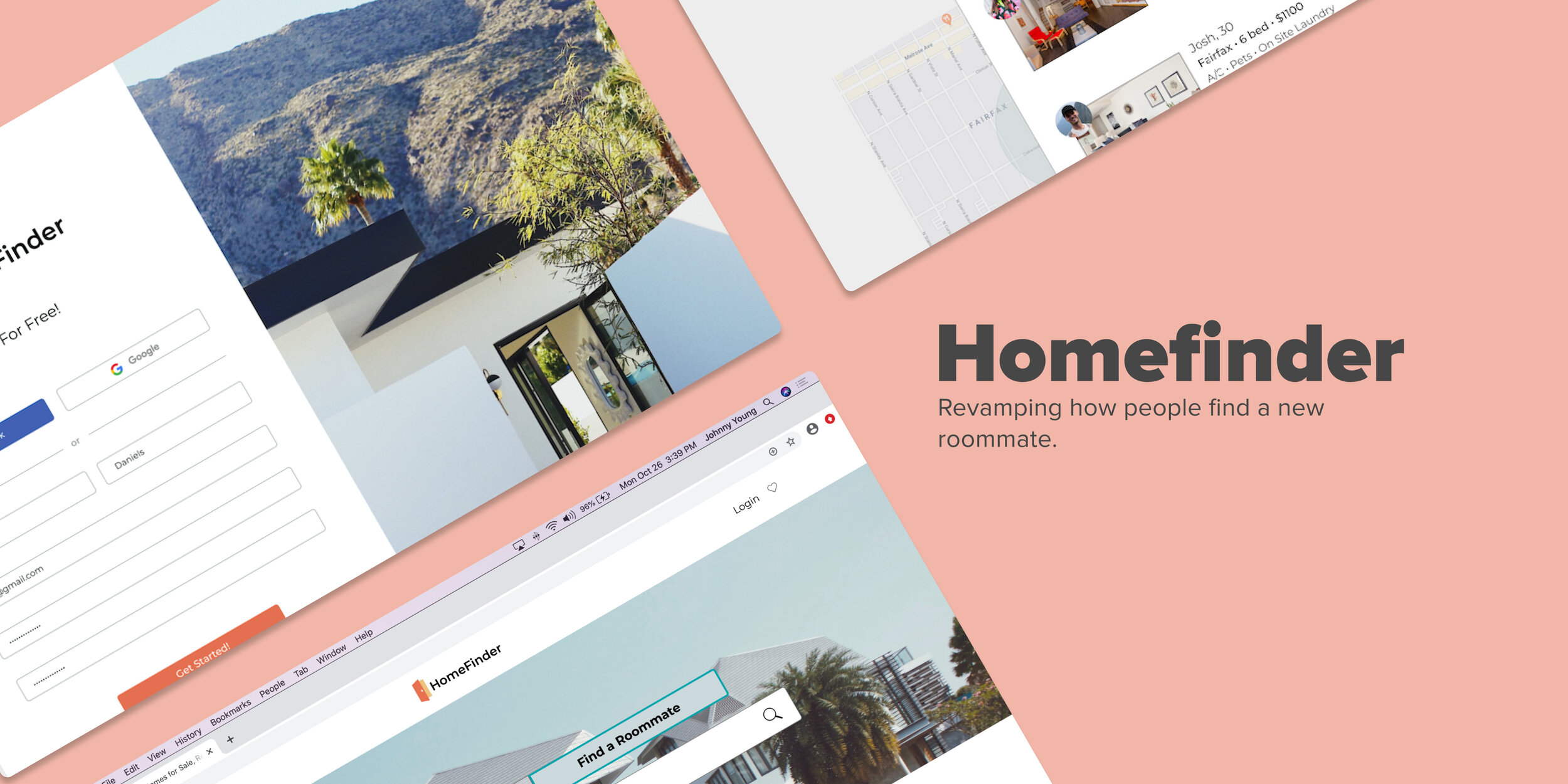
Overview
The Company
HomeFinder is an online platform which serves home buyers, sellers, renters and real estate professionals across the US. With millions of listing, Homefinder looks to provide a streamline way for users to search for properties and meet their real estate needs.
Project Goal
In this project, our team looked to design a feature that would introduce users to the emerging community-driven living concept known as co-living.
Project Details
My Role:
In this project, I served as the Team & Interaction Design Lead. With my colleague, Xin Ma, we led in all facets of the visual design process while our 2 other counterparts led in the research process.
I was charged with the following tasks: creating digital wireframes, mid & hi-fidelity mock-ups, interaction design, and prototyping. I also assisted in conducting user interviews, strategy, and usability testing for the site.
Timeline: 2-weeks
Team: Angela Towne, Xin Ma, Erickson Utley
Tools: Figma | Miro | OptimalSort | Trello | Slack
Discover and Define
Market Research
To gain better insights into how the implementation of this feature would bring value HomeFinder and our users, we began by researching the co-living industry.
Key Takeaways:
Competitive & Comparative Analysis
In addition to our market research, we also conducted a side by side analysis of HomeFinder’s direct competitors as well as comparable business to understand how we stacked up.
User Interviews
Our goal was to explore what information users find most important to them when looking for a new home or housemate. We also look to understand their overall process during their search.
Defining the Persona
We created our Persona Jeremy, based on the data we complied from our interviews. As we look to design around our users’ needs and goals, we use Personas to see who those users are, and what they need.
Design
Rapid sketching for the best
During the ideation process, we collectively participated in a rapid sketching exercise. We conducted 2 rounds of this exercise to explore many different ways to implement this new co-living feature.
This was a wonderful exercise as it’s fast and allows you to generate multiple solutions. Regardless, how crazy your ideas maybe, it’s great to have an array of solutions and gradually narrow down to the best solution before converting them in digital wireframes.
Digital Wireflow
Mapping out the entire flow was an essential step during the design process as it guided our team in each design decision we made. This help identify any steps that may have been missed as well as steps that can be remove which would prevent the user from completing their task.

Deliver

Homepage
To capture the attention of our users, we knew that the homepage needed to be addressed. Our first goal was to provide users with a clear call to action to either find a new home or roommate. Next, was to provide a modern & friendlier look the homepage that would resonate with both our older and younger audience.
(Before)
(After)
Sign-up
To provide users with an efficient sign-up process, users had the option to create an account using Facebook or Google account. Otherwise, users can use their e-mail address.

Create an Account
In the account creation process, we built our questions around the results from our user interviews and what they found most important when looking for a new roommate ( age, lifestyle, gender, and whether the person had kids or pets).
To keep users engaged during this process, we divided the questions into 3 categories where the questionnaire form would collapsed and expanded as each section has been completed.

Finding a Match
Once users have created their account and completed the questionnaire, users are given a refined list of potential roommates who aligns more closely to their living preference.
Final Thoughts
During this 2-week project, I took away many lessons but most notably:
As designers, it is easy to put 100% of your effort towards the website's aesthetics and to forget about the user. This project proved why it's important to listen to our users as it plays a pivotal role in all your design decisions and makes life easier.
If given more time, I would expand the co-living questionnaire. By providing a large set of questions, users can tailor the search even further and be better matched to their ideal living arrangements.
Prototype video walk-through










